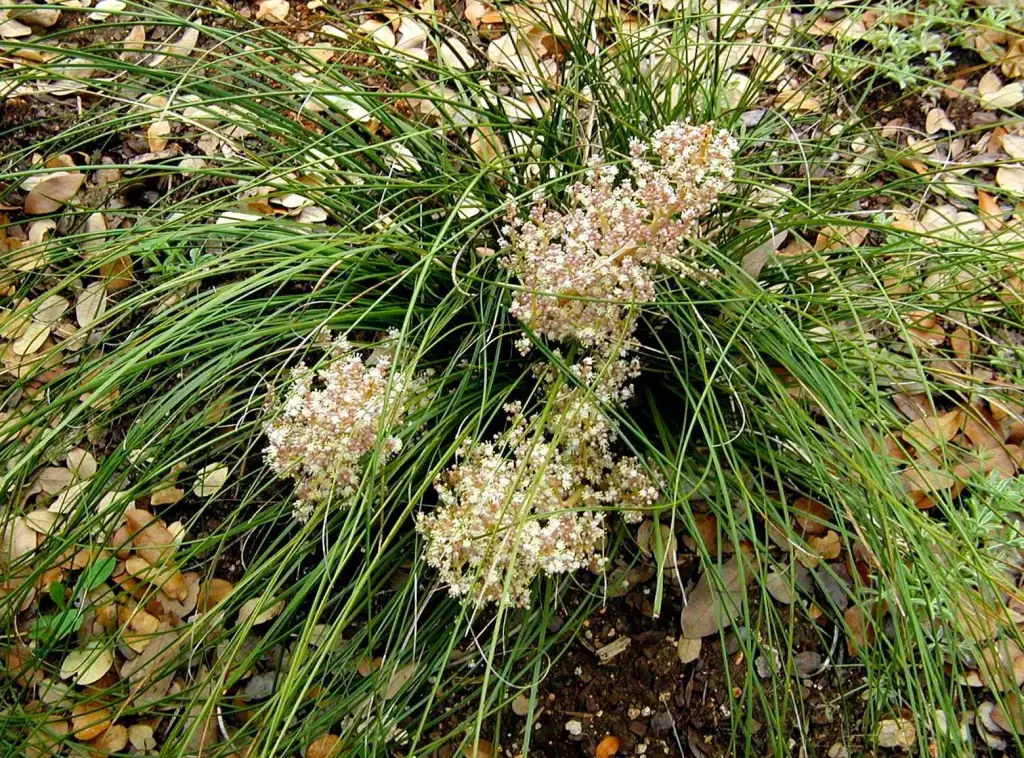Author: Bill Ward
Operation NICE! (Natives Instead of Common Exotics!) selection for November is nolina or sacahuista, the “bunch grass” that isn’t a grass. Nolina texana commonly is called beargrass, bunch-grass, or basket grass, but it is a member of the agave family, making it a cousin of yucca, sotol, and century plant.

Nolina texana grows as a two-foot-high mound of numerous long, very slender leaves. It is a commonly cultivated evergreen landscape plant that is suitable for both shady and sunny settings. My neighbor Clark Terrell uses it effectively as a handsome erosion-control plant in his very steep front yard. Once established it is highly drought tolerant, needs no fertilizer nor pesticides, and is deer resistant. Nolinas can be used as accent plants in yards instead of bunch grass or pampas grass.
In this part of the Hill Country, Nolina texana can be found growing out of rocky slopes in full sun as well as hanging from limestone ledges along shaded stream canyons. The almost-rounded leaves are only about a tenth of an inch wide and up to four feet long. Patty Leslie Pasztor, the naturalist and native-plant authority, told me that Native Americans used nolina leaves for making baskets, thatching, and ties for bundles.
In the spring, stalks of pinkish cream-colored blooms stay low, almost hidden within the thick mound of leaves. Reportedly, the tiny flowers are poisonous to livestock.
Nolina texana grows wild in Central, Southwest, and Trans-Pecos Texas, as well as New Mexico and northern Mexico. The other nolina found in our area is restricted only to south Central Texas and the southern Edwards Plateau. This is Nolina lindheimeriana, also known as ribbon-grass, devil’s shoestring, or Lindheimer’s nolina.

It is easier to tell that Lindheimer’s nolina belongs to the agave family. It is more yucca-like with numerous narrow, flat leaves, not so numerous and thin as those of Nolina texana. Leaves of Nolina lindheimeriana are about a quarter inch wide and less than three feet long. Also Lindheimer’s nolina sends up taller bloom stalks, with the blooms well above the leaves. Last year, one plant in our backyard had eight bloom stalks, each about four feet long with many tiny white blooms over much of the length of the stalk.
This nolina does well in well-drained soil in part shade or full sun. It can be used in landscapes where small yuccas would be appropriate. Once established it requires very little if any watering. It is cold tolerant and stays green all year.
The four nolina plants in our yard prove that both of the locally-native nolinas grow just fine in poor and unfertilized soil without watering. They are perfectly NICE! plants.
The Boerne Chapter of the Native Plant Society of Texas provides free planting and care instructions for nolinas at Boerne nurseries participating in Operation NICE! (Hill Country African Violets and Nursery and Maldonado Landscape and Nursery), as well as at Cibolo Nature Center.
